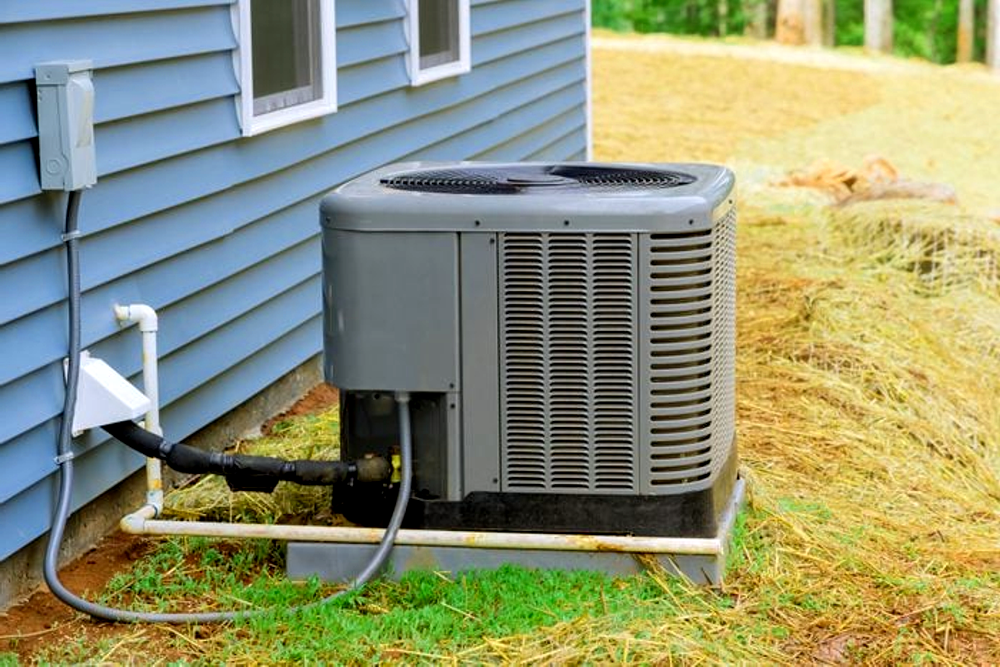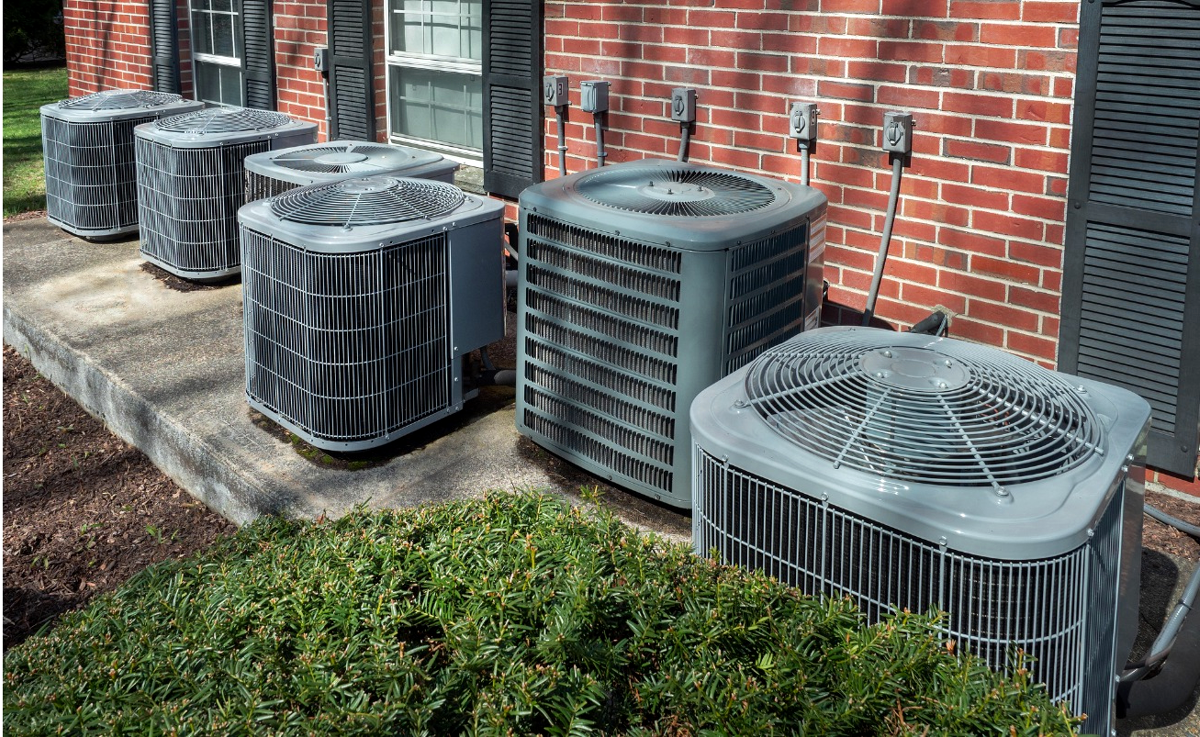The HVAC system that heats your home in winter and cools it in summer consists of a maze of pipes filled with refrigerant. The refrigeration cycle inc
The HVAC system that heats your home in winter and cools it in summer consists of a maze of pipes filled with refrigerant. The refrigeration cycle includes four major components: the compressor, condenser, expansion device and evaporator. These components are piped together in a refrigeration cycle to create cool air blown into your home via return and supply vents, ductwork and a circulating fan.
Condenser
The condenser is the key to your HVAC system’s ability to cool you. It’s responsible for pumping refrigerant through your system, and it needs to work as well as possible alongside the compressor and evaporator to ensure that you’re properly cooled every time. After the compression phase, the refrigerant moves to the outdoor unit, which flows through the condenser coils. Here, it changes from a gas to a liquid state, surrendering its latent heat as it does so.
Because the coils in a condenser are exposed to outside temperatures, they can easily become dirty or clogged over time. It may lead to the refrigerant experiencing a pressure loss or even leaking out entirely. If you’re noticing less cool air than normal, high energy bills or a buildup of fluid around your unit, it’s worth scheduling a visit from an experienced technician for chiller services Austin TX. A quick look at the condenser may reveal the issue, saving you a costly repair bill.
Read More: Direct cool vs. frost-free: Know which a wise purchase is
Compressor

The compressor is the heart of your refrigeration cycle, as it pumps refrigerant vapor through your system. It compresses (squeezes) the vapor into a smaller volume, raising its pressure and temperature. This process generates heat, which must be dissipated to avoid overheating or loss of energy efficiency. It is accomplished through a mechanical pumping action, using Boyle’s Law (as the volume of a gas decreases, its pressure increases).
There are several different types of compressors, but all work on this principle. Some use a piston in a cylinder that moves up and down, like a bike tire pump, while others are hermetic or semi-hermetic, with the motor driving the compressor built into the pressurized gas envelope.
In these systems, the engine is also cooled by the compressed gas. Others, such as open compressors, have an external motor driving a shaft through the compressor’s body. This type of compressor requires a more complex cooling system.
Evaporator
A key part of refrigeration is that heat must be removed from something to cool it. It can be air or water, but it can also be an object. Refrigerants like propane (R290), ammonia (R717), and CO2 can be used to change their physical state from liquid to vapor.
It is called evaporation. As this happens, the refrigerant extracts heat from the object or space in which it is placed (think of dipping your finger in water and feeling it quickly feel cooler). It does this by absorbing hidden heat that cannot be measured by a thermometer, a process known as latent heat.
This heat-extracting vapor is sent to the condenser, where it gives up its hot gaseous state for cold liquid. It is then pushed to the metering device, where it changes state again and becomes a low-pressure liquid. It is now on the “low side” of the cycle and ready to start cooling things down.
Read More: What is the Purpose and Working of the AC Deflector
Expansion Valve
The expansion valve doesn’t cool refrigerant directly, but it’s vital for keeping your air conditioner’s efficiency high. It does this by restricting the liquid flow into your evaporator coil so that only the amount necessary can enter at a low enough pressure to allow isenthalpic expansion back into a vapor state that absorbs heat from the air. The exact way that your expansion valve accomplishes this is more complex than you might think.
The movable pin within an expansion valve operates against spring pressure to maintain a precise opening force based on the temperature of the sensor thermistor bulb and evaporator pressure. A valve’s position is also determined by the adjusted tension of a coil spring that both retards and assists the pin movement.
This precise operation prevents the refrigerant from returning to the compressor and destroying the entire system. While there are electronic expansion valves that provide greater control options than the traditional bulb/diaphragm style, they are more complex and add points of failure to your HVAC system.

COMMENTS